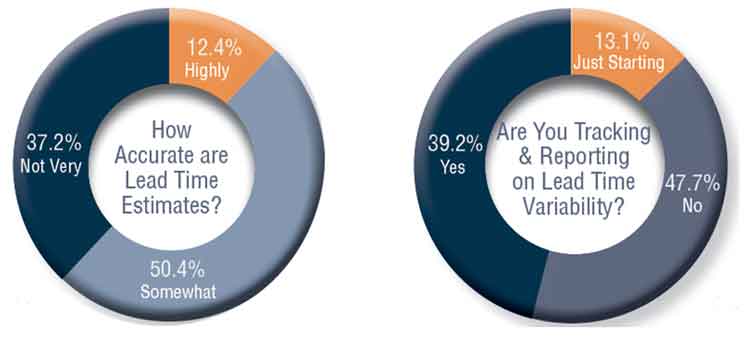Supply Chain Graphic of the Week: Estimating Lead Times in Global Sourcing
SCDigest recently released a new benchmark report on the global sourcing and trade management practices and trends, - and it is a fine piece of work, if we do say so ourselves. The report, based on detailed survey results from 200 supply chain professionals, is available here: Global Sourcing & Trade Management 2016 Benchmark Report
Among the many areas of sourcing and trade management the study looked at was the ability of companies to accurately estimate lead times.
As shown in the graphic below, just over 50% of respondents say their lead time estimates are somewhat accurate, while only 12.4% say their estimates are highly accurate. In addition, a substantial 37% say their lead time estimates are not very accurate for global deliveries.
"Lumpy flow of goods challenges capacity constraints at several points in the supply chain,” one respondent observed. “We have extra time built into lead time to account for systematically created congestion."

Source: SCDigest Study on Global Sourcing and Trade Management
The survey data also showed that less than half of companies (39.2%) are currently tracking and reporting on global lead time variability, versus 47% that are not performing such tracking and 13% that say they are just starting.
SCDigest wonders if even this doesn't overstate the case a bit. Over the past few years a number of supply chain academics have reported being thwarted in projects to analyze global lead time variability because of the difficulty in obtaining accurate data from shippers.
That included an ultimately successful project at MIT, which said in the end it was able to get data from just a handful of companies, and that getting the data took much longer than the actual analysis once the data was finally received. (See MIT Research Puts Some Real Data Behind Ocean Shipping Variability.)
No comments:
Post a Comment